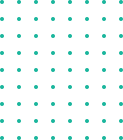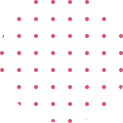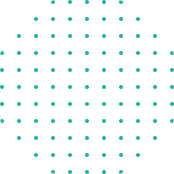Top 50 Machine Learning Project ideas for Final Year Students - 2023
Overview
CITL is a machine learning project training Institute in Bangalore and provides what is essential to hone skills and materialize classroom knowledge into a practical experience for students. Developing real-world projects for students to have comprehensive methods is the core concept of CITL.
The best way to make out Machine Learning and its projects is by elucidating the theme and purpose in a crystal clear manner for students. There are plenty of projects today that can ignite the minds to emphasize more upon the projects. CITL has enough experience analyzing students and their ability to pave the path for a better career. CITL provides a wide range of machine learning programs for final year students to gain skills in emerging technologies.
Students can get confidence and take pride in the subject matters in attaining at CITL. A comprehensive transformation is possible at CITL for students to change their lifestyles. What’s better than a transformation in life to reach the goal? Here are some of the best top 50 machine learning project ideas for Final Year Students!!!
List of Machine Learning Project ideas for Beginners
1. Natural Language Processing and Computer Vision for the Detection of Potentially Illicit Messages on Twitter and Linked Websites
Millions of victims lose their dignity as a result of the widespread issue of human trafficking. Currently, this crime is disseminated online through social networks by means of hidden messages that advertise these unlawful services. Automatically identifying messages that may be connected to this incident and could also be used as clues is crucial in this situation because law enforcement resources are limited.
In the current study, we use natural language processing to find tweets that might advertise these illicit services and take advantage of children. It is feasible to find pictures of children under 14 years old since the images and URLs obtained in suspicious communications were processed and categorized by gender and age group.
The approach was as follows. First, real-time mining is done on tweets with hash tags pertaining to minors. These tweets are preprocessed to remove background noise and typos before being classified as suspicious or not. Additionally, Haar models are used to choose the geometrical characteristics of the face and body. We can identify a person's gender and age group by using Support Vector Machine (SVM) and Convolutional Neural Network (CNN), even when the details of the face are blurry or the torso is not proportional to the head. Consequently, the SVM model using just torso features performs better than CNN.
2. Evaluation of Subjective Answers Using Machine Learning
Negative methods are currently used to evaluate subjective writing. The evaluation of the subjective responses is an essential responsibility. When a human analyses anything, the evaluation's quality can change depending on the person's emotions. All outcomes in machine learning are solely dependent upon the user's input data. To address this issue, our suggested approach makes use of machine learning and NLP.
To evaluate the subjective response, our algorithm performs tasks including tokenizing words and phrases, classifying parts of speech, chunking, chinking, lemmatizing words, and wordneting. Our suggested approach also offers the context's semantic meaning. There are two modules in our system. The first involves taking the information from the scanned photos and structuring it properly. The second involves applying ML and NLP to the text that was taken from the previous stage and assigning grades to it.
3. ML approach for musical therapy using facial expressions
Nearly all sorts of human emotions have a direct relationship with the particular music genre, and most people think that music is expressive and that its expressivity can be easily tied to people's emotions. The normal way to tell if a person is feeling happy, sad, angry, scared, depressed, or tender is by looking at their facial expressions. Humans' emotions can be altered by music, which may also have an impact on their mood and health. One of the first methods for treating some psychological illnesses is musical therapy.
An intelligent system that organizes a music collection based on the genres each song conveys and then suggests a well-suited music playlist to the psychiatrist for the patients based on their facial expressions is created by the combination of musical therapy and facial emotion detection. The picture is put through facial recognition and emotion recognition. the patients' techniques. The tunes that go with The greatest playlist for this emotion is then suggested. results in calming and relaxing patients.
4. Dynamic traffic management system based on IoT and image processing
Traffic management has become a significant issue as a result of the increase of automobiles. The system of manual traffic is ineffective. The adaptive traffic control system in this paper uses image processing and the Internet of Things (IoT). The suggested system has the capacity to use image processing to examine real-time data. Cameras are used to continuously monitor the various lanes.
Examining the data collected from various lanes. Image processing is used to find and count the number of vehicles in each lane. The central processing unit receives the count from each lane. The signal lights will be determined when the waiting time for each lane has been calculated using the algorithm based on the number of vehicles.
The average waiting time is decreased because to this technique, which also improves traffic flow efficiency. The technology is also effective in emergency scenarios and lessens pollution from CO2 emissions, making it an Internet of Things-based adaptive traffic management system (IoT).
5. A CNN-based Framework for Comparison of Contactless to Contact-based Fingerprints
Accurate comparison of contactless 2D fingerprint images with contact-based fingerprints is critical for the success of emerging contactless 2D fingerprint technologies, which offer more hygienic and deformation-free acquisition of fingerprint features. Convolutional neural networks (CNN) have shown remarkable capabilities in biometrics recognition.
However, there has been almost nil attempt to match fingerprint images using CNN based approaches. This paper develops a CNN-based framework to accurately match contactless and contact-based fingerprint images.
Our framework firstly trains a multi-Siamese CNN using fingerprint minutiae, respective ridge map and specific region of ridge map. This network is used to generate deep fingerprint representation using a distance-aware loss function. Deep fingerprint representations generated in such multi-Siamese network are concatenated for more accurate cross comparison.
The proposed approach for cross-fingerprint comparison is evaluated on two publicly available databases containing contactless 2D fingerprints and respective contact-based fingerprints. Our experiments presented in this paper consistently achieve outperforming results, over several popular deep learning architectures and over contactless to contact-based fingerprints comparison methods in the literature.
6. Air Pollution Prediction System for Smart City using Data Mining Technique: A Survey

Air pollution is one of the major hazards among the environmental pollution. As each living organism needs fresh and good quality air for every second. None of the living things can survive without such air. But because of automobiles, agricultural activities, factories and industries, mining activities, burning of fossil fuels our air is getting polluted. These activities spread sulfur dioxide, nitrogen dioxide, carbon monoxide, particulate matter pollutants in our air which is harmful for all living organism.
The air we breathe every moment causes several health issues. So we need a good system that predicts such pollutions and is helpful in better environment. It leads us to look for advance techniques for predicting the air pollution. So here we are predicting air pollution for our smart city using data mining technique.
In our model we are using multivariate multistep Time Series data mining technique using random forest algorithm. Our system takes past and current data and applies them to our model to predict air pollution. This model reduce the complexity and improves the effectiveness and practicability and can provide more reliable and accurate decision for environmental protection departments for smart city.
7. Phishing Web Sites Features Classification Based on Extreme Learning Machine.

Phishing are one of the most common and most dangerous attacks among cybercrimes. The aim of these attacks is to steal the information used by individuals and organizations to conduct transactions. Phishing websites contain various hints among their contents and web browser-based information.
The purpose of this study is to perform Extreme Learning Machine (ELM) based classification for 30 features including Phishing Websites Data in UC Irvine Machine Learning Repository database. For results assessment, ELM was compared with other machine learning methods such as Support Vector Machine (SVM), Naïve Bayes (NB) and detected to have the highest accuracy of 95.34%
8. Machine Learning for Web Vulnerability Detection: The Case of Cross-Site Request Forgery.

In this article, we propose a methodology to leverage Machine Learning (ML) for the detection of web application vulnerabilities. Web applications are particularly challenging to analyze, due to their diversity and the widespread adoption of custom programming practices.
ML is thus very helpful for web application security: it can take advantage of manually labelled data to bring the human understanding of the web application semantics into automated analysis tools. We use our methodology in the design of Mitch, the first ML solution for the black-box detection of Cross-Site Request Forgery (CSRF) vulnerabilities. Mitch allowed us to identify 35 new CSRFs.
9. Image processing based Tracking and Counting Vehicles
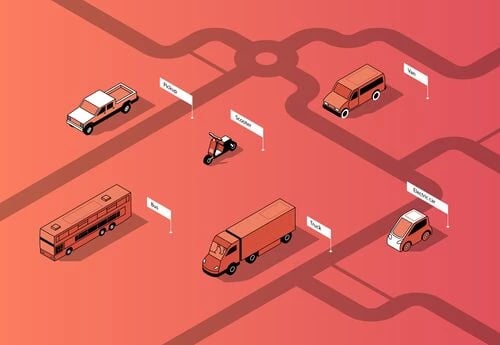
In this research work, we explore the vehicle detection technique that can be used for traffic surveillance systems. This system works with the integration of CCTV cameras for detecting the cars. Initial step will always be car object detection.
Haar Cascades are used for detection of car in the footage. Viola Jones Algorithm is used in training these cascade classifiers. We modify it to find unique objects in the video, by tracking each car in a selected region of interest. This is one of the fastest methods to correctly identify, track and count a car object with accuracy up to 78 percent
10. SMS Spam Detection using Machine Learning Approach.
Over recent years, as the popularity of mobile phone devices has increased, Short Message Service (SMS) has grown into a multi-billion dollars industry. At the same time, reduction in the cost of messaging services has resulted in growth in unsolicited commercial advertisements (spams) being sent to mobile phones.
In parts of Asia, up to 30% of text messages were spam in 2012. Lack of real databases for SMS spams, short length of messages and limited features, and their informal language are the factors that may cause the established email filtering algorithms to underperform in their classification.
In this project, a database of real SMS Spams from UCI Machine Learning repository is used, and after preprocessing and feature extraction, different machine learning techniques are applied to the database. Finally, the results are compared and the best algorithm for spam filtering for text messaging is introduced.
Final simulation results using 10-fold cross validation shows the best classifier in this work reduces the overall error rate of best model in original paper citing this dataset by more than half.
Also Read IoT Project Ideas
11. Rainfall Prediction using Regression Model.

Artificial intelligence is been widely used in all the applications and weather forecasting is not an exception. When it comes to weather forecasting, rainfall prediction is one of the most widely used research areas as numerous lives and property damages occur due to this. Intense rainfall has abundant impacts on society and on our daily life from cultivation to disaster measures. Previous rainfall prediction models that are widely used, makes use of many the complicated blend of mathematical instruments which was insufficient to get a higher classification rate.
In this project, we propose new novel methods for predicting monthly rainfall using linear regression analysis. Rainfall predictions are made by collecting quantitative data about the current state of the atmosphere. Numerous machine learning algorithms can learn complex mappings from inputs to outputs, based solely on samples and require limited. Accurate prediction of rainfall is a difficult task due to the dynamic nature of the atmosphere.
To predict the future’s rainfall condition, the variation in the conditions in past years must be utilized. We have proposed the use of linear regressions by making use of various parameters such as temperature, humidity, and wind.
The proposed model tends to forecast rainfall based on the previous records of a particular geographic area, therefore, this prediction will prove to be much reliable. The performance of the model is more accurate when compared with traditional rainfall prediction systems
12 Human Activity Recognition using Open Cv & Python
Human activities recognition has become a groundwork area of great interest because it has many significant and futuristic applications; including automated surveillance, Automated Vehicles, language interpretation and human computer interfaces (HCI). In recent time an exhaustive and in depth research has been done and progress has been made in this area.
The idea of the proposed system is a system which can be used for surveillance and monitoring applications. This paper presents a part of newer Human activity/interaction recognition onto human skeletal poses for video surveillance using one stationary camera for the recorded video data set. The traditional surveillance cameras system requires humans to monitor the surveillance cameras for 24*7 which is oddly inefficient and expensive.
Therefore, this research paper will provide the mandatory motivation for recognizing human action effectively in real-time (future work). This paper focuses on recognition of simple activity like walk, run, sit, stand by using image processing techniques.
13. Customer Segmentation using K-Means Algorithm
We live in a world where large and vast amount of data is collected daily. Analyzing such data is an important need. In the modern era of innovation, where there is a large competition to be better then everyone, the business strategy needs to be according to the modern conditions.
The business done today runs on the basis of innovative ideas as there are large number of potential customers who are confounded to what to buy and what not to buy. The companies doing the business are also not able to diagnose the target potential customers.
This is where the machine learning comes into picture, the various algorithms are applied to identify the hidden patterns in the data for better decision making. The concept of which customer segment to target is done using the customer segmentation process using the clustering technique. In this paper, the clustering algorithm used is K-means algorithm which is the partitioning algorithm, to segment the customers according to the similar characteristics. To determine the optimal clusters, elbow method is used.
14. Crime analysis and prediction using data mining techniques
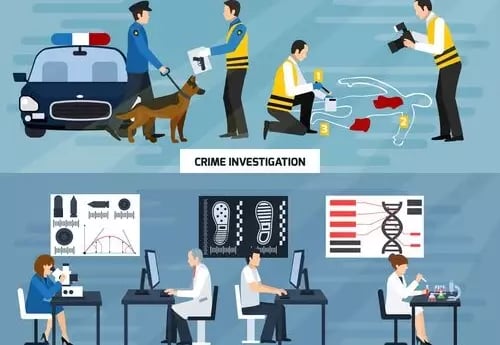
Crime analysis and prediction is a systematic approach for identifying and analyzing patterns and trends in crime. Our system can predict regions which have high probability for crime occurrence and can visualize crime prone areas. With the increasing advent of computerized systems.
The main aim is that instead of focusing on cause of crime occurrences we are focusing mainly on crime factors. By using the concept of Data Mining, we can extract previously unknown useful information from an unstructured data.
We can approach between computer science and criminal justice to develop a data mining procedure that can help solve crimes faster. Criminals also be predicted based on the crime data. Events of crime and illegal activities have increased in the past few years. We propose a system which can analyze, detect and predict various crime probability in a given region.
To accomplish this, we obtain raw data from police department official website. On this pre processed data sets, by applying Naïve Bayesian algorithm we create a predictive model which analyze the data and helps to predict the trends of crimes for a given region in a future. With the aim of securing the society from crimes, there is a need for advance system and new approaches for improving the crime analytics for protecting their community.
Accurate real time crime predictions help to reduce the crime rate. But remains challenging problem for the scientific community as a crime occurrences depend on many complex factors. The hidden relationship among the data which is further used to report and discover the crime pattern s that is valuable for the crime analytics to analyze these crime networks by the means of various interactive visualization for crime prediction and hence is supportive in prevention of crimes.
This probabilistic trend is also displayed in form of graphs for easy understanding of the police department. This paper explains various types of criminal analysis and crime prediction using several Data Mining techniques. Towards this goal, crime hotspot prediction has previously been suggested. Crime hotspot prediction leverages past data in order to identify crime hotspots, while ignoring the predictive power of other data such as urban or social media data.
Crime data analysts can help the law enforcement officers to speed up the process of solving crimes. Using the concept of data mining we can extract previously unknown, useful information from an unstructured data. Here we have an approach between computer science and criminal justice to develop a data mining procedure that can help solve crime faster.
15. Raspberry pi based hand gesture recognition & voice conversion system for dumb people.
Hand Gesture plays a major role for dumb people to communicate with normal people. It is very difficult for mute people to convey their message to normal people. Since normal people are not trained on hand language. In emergency time conveying their message is very difficult .To overcome that proposing a prototype called speaking mouth for dumb people.
It will be very helpful to them for conveying their thoughts to others.. This system is based on the integration of hardware and software. According to dumb people, for every motion they have a meaning. So software part taken care of recognizes the human hand gesture and converts that into human hearing voice. Hence voice conversion helps to the dumb.
16. django framework for CV analysis and personality prediction using big 5 traits
Personality can be defined as a set of characteristics which makes a person unique. The study of personality is of central importance in psychology. There are various conventional ways of assessing one’s personality which either costs too much of manual efforts or cannot be done in real time.
To solve these problems, this research aims to measure the Big-Five personality from a set of questions. The user is asked to answer a set of few questions and according to the questions answered by the user the personality of the user is predicted using logistic regression model.
17. Driver Drowsiness Monitoring System using Visual Behavior and Machine Learning
Drowsy driving is one of the major causes of road accidents and death. Hence, detection of driver’s fatigue and its indication is an active research area. Most of the conventional methods are either vehicle based, or behavioral-based or physiological based. Few methods are intrusive and distract the driver, some require expensive sensors and data handling. Therefore, in this study, a low cost, real time driver’s drowsiness detection system is developed with acceptable accuracy.
In the developed system, a webcam records the video, and driver’s face is detected in each frame employing image processing techniques. Facial landmarks on the detected face are pointed and subsequently the eye aspect ratio, mouth opening ratio and nose length ratio are computed and depending on their values, drowsiness is detected based on developed adaptive thresholding. Machine learning algorithms have been implemented as well in an offline manner. A sensitivity of 95.58% and specificity of 100% has been achieved in Support Vector Machine-based classification.
18. Assistive Device for Blind, Deaf and Dumb People using Raspberry-pi

Addressing the issues of People with Visual, Hearing and Vocal Impairment through a single aiding system is a tough job. Many modern day researches focus on addressing the issues of one of the above challenges but not all. The work focuses on finding a unique technique that aids the visually impaired by letting them hear what is represented as text and it is achieved by the technique that captures the image through a camera and converts the text available as voice signals.
The paper provides a way for the people with Hearing impairment to visualize / read which is in audio form by speech to text conversion technique and we also provides a way for the vocally impaired to represent their voice by the aid of text to voice conversion technique. All these three solutions were modulated to be in a single unique system. All these activities are coordinated with the use of Raspberry Pi.
The visually impaired people are helped by the process in which the image to text and text to speech is given by the Tesseract OCR (online character recognition). The deaf people help with the process of an app which makes them to understand what the person says can be displayed as the message. Vocally impaired people can convey their message by text so the other persons can hear the message in a speaker.
19. Classification of Cancerous Profiles using Machine Learning
There are variety of options available for cancer treatment. The type of treatment recommended for an individual is influenced by various factors such as cancer-type, the severity of cancer (stage) and most important the genetic heterogeneity. In such a complex environment, the targeted drug treatments are likely to be irresponsive or respond differently.
To study anticancer drug response we need to understand cancerous profiles. These cancerous profiles carry information which can reveal the underlying factors responsible for cancer growth. Hence, there is need to analyze cancer data for predicting optimal treatment options. Analysis of such profiles can help to predict and discover potential drug targets and drugs. In this paper the main aim is to provide machine learning based classification technique for cancerous profiles.
20. Voice based Email for Blind.

As the title suggests, the application will be a web-based application for visually impaired persons using IVR- Interactive voice response, thus enabling everyone to control their mail accounts using their voice only and to be able to read, send, and perform all the other useful tasks.
The system will prompt the user with voice commands to perform certain action and the user will respond to the same. The main benefit of this system is that the use of keyboard is completely eliminated, the user will have to respond through voice and mouse click only.
Now you must be thinking that how will a blind person will see the correct position on the screen for doing mouse clicks. But this system will perform actions based on the clicks only that is left click or right click, it does not depends on the portion of the screen where the cursor is placed before the click giving user the freedom to click blindly anywhere on the screen.
21. Disease Prediction by Machine Learning Over Big Data From Healthcare Communities
With big data growth in biomedical and healthcare communities, accurate analysis of medical data benefits earl y disease detection, patient care, and community services. However, the analysis accuracy is reduced when the quality of medical data is incomplete.
Moreover, different regions exhibit unique characteristics of certain regional diseases, which may weaken the prediction of disease outbreaks. In this paper, we streamline machine learning algorithms for effective prediction of chronic disease outbreak in disease-frequent communities.
We experiment the modified prediction models over real-life hospital data collected from central China in 2013_2015. To overcome the difficulty of incomplete data, we use a latent factor model to reconstruct the missing data. We experiment on a regional chronic disease of cerebral infarction.
We propose a new convolutional neural network (CNN)-based multimodal disease risk prediction algorithm using structured and unstructured data from hospital. To the best of our knowledge, none of the existing work focused on both data types in the area of medical big data analytics. Compared with several typical prediction algorithms, the prediction accuracy of our proposed algorithm reaches 94.8% with a convergence speed, which is faster than that of the CNN-based unimodal disease risk prediction algorithm.
22. Object Detection, convert object name to text and text to speech.
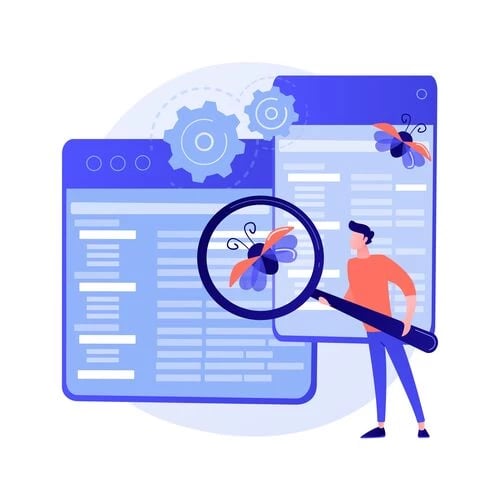
Efficient and accurate object detection has been an important topic in the advancement of computer vision systems. With the advent of deep learning techniques, the accuracy for object detection has increased drastically. The project aims to incorporate state-of-the-art technique for object detection with the goal of achieving high accuracy with a real-time performance.
A major challenge in many of the object detection systems is the dependency on other computer vision techniques for helping the deep learning based approach, which leads to slow and non-optimal performance. In this project, we use a completely deep learning based approach to solve the problem of object detection in an end-to-end fashion.
The network is trained on the most challenging publicly available dataset (PASCAL VOC), on which a object detection challenge is conducted annually. The resulting system is fast and accurate, thus aiding those applications which require object detection. We present YOLO, a new approach to object detection. Prior work on object detection repurposes classifiers to perform detection. Instead, we frame object detection as a regression problem to spatially separated bounding boxes and associated class probabilities.
A single neural network predicts bounding boxes and class probabilities directly from full images in one evaluation. Since the whole detection pipeline is a single network, it can be optimized end-to-end directly on detection performance.
23. Raspberry Pi based unauthorized car parking system by capturing the number plate of a vehicle using open cv technique thereby alarming the police & vehicle owner.
Objective of this project is to notify traffic department when the car enters no parking area, It is done by capturing number plate of a vehicle using open cv technique, an alarm is sent to the vehicle owner for parking vehicle in no parking place & number plate of the vehicle is sent to police for collecting the penalty charges.
24. Application of Data Mining Methods in Diabetes Prediction

Data science methods have the potential to benefit other scientific fields by shedding new light on common questions. One such task is help to make predictions on medical data. Diabetes mellitus or simply diabetes is a disease caused due to the increase level of blood glucose.
Various traditional methods, based on physical and chemical tests, are available for diagnosing diabetes. The methods strongly based on the data mining techniques can be effectively applied for high blood pressure risk prediction.
In this paper, we explore the early prediction of diabetes via five different data mining methods including: SVM, Logistic regression,. The experiment result provides the highest accuracy than other techniques.
25. An Approach to Maintain Attendance using Image Processing Techniques
Nowadays, the research is growing towards the invention of new approaches. One such most attracted application is face recognition of image processing. There are several innovative technologies have been developed to take attendance.
Some prominent ones are biometric, thumb impressions, access card, and fingerprints. The method proposed in this paper is to record the attendance through image using face detection and face recognition. The proposed approach has been implemented in four steps such as face detection, labelling the detected faces, training a classifier based on labelled dataset, and face recognition. The database has been constructed with the positive images and negative images.
The complete database has been divided into training and testing set and further, processed by a classifier to recognize the faces in a classroom. The final step is to take the attendance using face recognition technique in which the input image of a classroom is given, and faces of the given image will be detected along with their IDs. The frames of a video taken for a minute is taken into consideration to avoid the missed ones due to rotational issues.
26. Sentiment Analysis of Top Colleges
In the current era reviews, opinions play crucial role in planning sees from claiming clients and also influence us to the success of a brand, service of a product. The same also apply when deciding the best among various alternatives we have. For the approach and development about online networking in the world, stakeholders frequently take part in expressing their feelings looking into prominent social media, to be specific twitter. Same time twitter information may be greatly informative; it displays a test for investigation in light of about its humongous and disarranged way.
The work in this report is to perform sentiment analysis on the top colleges in the country, considering the tweets from one of the social media named twitter. In the process of analysis many pre-processing techniques can be applied on the data that is generated by twitter, applying machine learning algorithms like KNN(K- nearest neighbors) to classify the best college among IITS, NITS and so on. By using Naïve Bayes and K-NN algorithms the results were generated in R Programming on the educational institutions. Then the results were measured in terms of accuracy with respect to Naïve Bayes and KNN.
27. Detection of fake online reviews using semi-supervised and supervised learning

Online reviews have great impact on today’s business and commerce. Decision making for purchase of online products mostly depends on reviews given by the users. Hence, opportunistic individuals or groups try to manipulate product reviews for their own interests.
This paper introduces some semi-supervised and supervised text mining models to detect fake online reviews in hotel as well as compares the efficiency of both techniques on dataset containing hotel reviews.
28.Prediction and Diagnosis of Heart Disease Patients using Data Mining Technique
We are living in a post modern era and there are tremendous changes happening to our daily routines which make an impact on our health positively and negatively. As a result of these changes various kind of diseases are enormously increased. Especially, heart disease has become more common these days.
The life of people is at a risk. Variation in Blood pressure, sugar, pulse rate etc. can lead to cardiovascular diseases that include narrowed or blocked blood vessels. It may causes Heart failure, Aneurysm, Peripheral artery disease, Heart attack, Stroke and even sudden cardiac arrest. Many forms of heart disease can be detected or diagnosed with different medical tests by considering family medical history and other factors. But, the prediction of heart diseases without doing any medical tests is quite difficult.
The aim of this project is to diagnose different heart diseases and to make all possible precautions to prevent at early stage itself with affordable rate. We follow ‘Data mining’ technique in which attributes are fed in to SVM, Random forest, KNN, and ANN classification Algorithms for the prediction of heart diseases. The preliminary readings and studies obtained from this technique is used to know the possibility of detecting heart diseases at early stage and can be completely cured by proper diagnosis.
29. A Deep Learning Approach for Face Detection using YOLO
Deep learning is nowadays a buzzword and is considered a new era of machine learning which trains the computers in finding the pattern from a massive amount of data. It mainly describes the learning at multiple levels of representation which helps to make sense on the data consisting of text, sound and images.
Many organizations are using a type of deep learning known as a convolutional neural network to deal with the objects in a video sequence. Deep Convolution Neural Networks (CNNs) have proved to be impressive in terms of performance for detecting the objects, classification of images and semantic segmentation. Object detection is defined as a combination of classification and localization.
Face detection is one of the most challenging problems of pattern recognition. Various face related applications like face verification, facial recognition, clustering of face etc. are a part of face detection. Effective training needs to be carried out for detection and recognition. The accuracy in face detection using the traditional approach did not yield a good result. This paper focuses on improving the accuracy of detecting the face using the model of deep learning.
YOLO (You only look once), a popular deep learning library is used to implement the proposed work. The paper compares the accuracy of detecting the face in an efficient manner with respect to the traditional approach. The proposed model uses the convolutional neural network as an approach of deep learning for detecting faces from videos.
The FDDB dataset is used for training and testing of our model. A model is finetuned on various performance parameters and the best suitable values are taken into consideration. It is also compared the execution of training time and the performance of the model on two different GPUs.
30.Analysis of Chronic Kidney Disease Dataset by Applying Machine Learning Methods
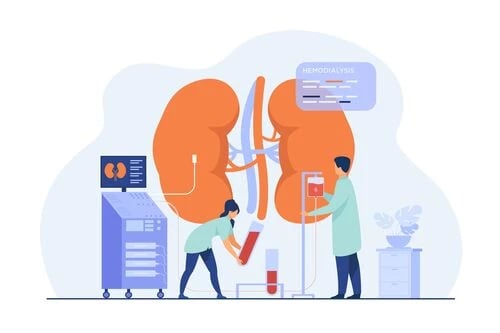
Currently, there are many people in the world suffering from chronic kidney diseases worldwide. Due to the several risk factors like food, environment and living standards many people get diseases suddenly without understanding of their condition. Diagnosing of chronic kidney diseases is generally invasive, costly, time-consuming and often risky.
That is why many patients reach late stages of it without treatment, especially in those countries where the resources are limited. Therefore, the early detection strategy of the disease remains important, particularly in developing countries, where the diseases are generally diagnosed in late stages. Finding a solution for above-mentioned problems and riding out from disadvantages became a strong motive to conduct this study. In this research study, the effects of using clinical features
31. Random Forest for Credit Card Fraud Detection.

Credit card fraud events take place frequently and then result in huge financial losses. Criminals can use some technologies such as Trojan or Phishing to steal the information of other people’s credit cards. Therefore, an effective fraud detection method is important since it can identify a fraud in time when a criminal uses a stolen card to consume.
One method is to make full use of the historical transaction data including normal transactions and fraud ones to obtain normal/fraud behavior features based on machine learning techniques, and then utilize these features to check if a transaction is fraud or not. In this paper, two kinds of random forests are used to train the behavior features of normal and abnormal transactions.
We make a comparison of the two random forests which are different in their base classifiers, and analyze their performance on credit fraud detection. The data used in our experiments come from an e-commerce company in China.
32. Smart Voting System through Facial Recognition
Facial recognition is a category of biometric software which works by matching the facial features. We will be studying the implementation of various algorithms in the field of secure voting methodology. There are three levels of verification which were used for the voters in our proposed system.
The first is UID verification, second is for the voter card number, and the third level of verification includes the use of various algorithms for facial recognition. In this paper, we will provide a comparative study between these algorithms, namely: Eigenface, Fisher Face & SURF of Smart voting system through Facial Recognition Projects.
Frequently Asked Questions
1) Why Do Machine Learning Projects Important for beginners?
The theory itself is not enough to understand the product and practical learning is required to find the in-depth subject. With the help of projects, you will attain knowledge and write the program for designing a project. So, a machine learning project from a professional institute is essential.
2) How long does a machine learning project take time to complete?
There is a regular project period of three weeks but another 3 to 6 weeks are required for you to complete the assigned project. It depends on you. If you are able to complete it in three weeks, it is okay, if not, it will take three more weeks.
3) What are the skills important for machine learning jobs?
- Being expertise in languages like Python/C++/R/Java.
- Able to analyze probability and statistics
- Machine learning algorithms
- Calculations based on Algebra, programming skills, calculus.
